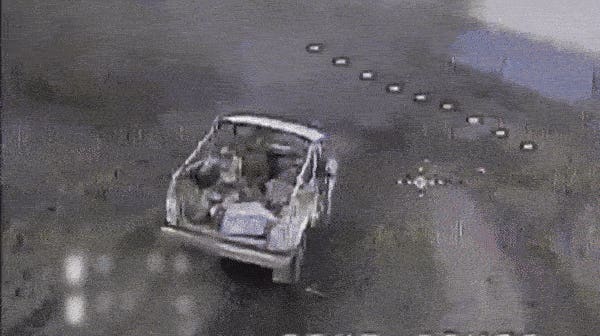Russia’s De-Mechanization: From Armored Vehicles to Ladas in the Ukraine War
The ongoing conflict in Ukraine has taken a significant toll on Russia’s military resources, particularly its armored vehicle reserves. Catastrophic losses, exceeding 15,000 vehicles, have forced the Russian military to adopt increasingly desperate measures. What initially seemed like isolated incidents – Russian soldiers using civilian Lada Zhigulis for assaults – has become a disturbingly common practice. These compact cars, barely 16 feet long and weighing just over a ton, are now being deployed in increasing numbers for offensive operations, highlighting the dwindling availability of traditional military vehicles.
The use of Ladas, including both the Zhiguli and the slightly more powerful Niva models, first emerged last fall as Russian assault groups embarked on near-suicidal attacks across the heavily monitored no-man’s-land in eastern Ukraine. At the time, these incidents were dismissed as anomalies, attributed to the most desperate and under-equipped units. However, the persistent attrition of armored vehicles has transformed these desperate measures into a standard operating procedure, reflecting a dramatic shift in the Russian military’s operational capabilities.
The scale of Russia’s armored vehicle losses far outstrips its production capacity. While the country produces roughly 200 new BMP-3 fighting vehicles and 90 T-90M tanks annually, alongside a few hundred other armored vehicles like the BTR-82, these numbers pale in comparison to the estimated 6,000 annual losses. For two years, the Kremlin bridged this gap by drawing from vast Cold War-era stockpiles. However, these reserves are now rapidly depleting, leaving the Russian military with increasingly limited options.
Analysis of open-source intelligence paints a stark picture of Russia’s dwindling armored vehicle reserves. Studies of satellite imagery reveal that many vehicles in long-term storage haven’t moved in years, suggesting they are inoperable. Jompy, an open-source analyst, uses the example of BTR wheeled fighting vehicles, noting that while Russia officially holds over 2,300 in storage, many are older models in poor condition. Imagery from storage sites across Russia, from near the Mongolian border to Kaliningrad and Moscow, shows vehicles untouched for a decade or more, effectively rendering them useless. As Jompy aptly points out, "A vehicle that doesn’t move for so long is a dead vehicle."
The implications of this resource depletion are profound. The normalization of Lada assaults signifies a critical tipping point: the exhaustion of Russia’s vehicle-generation efforts. This marks the beginning of a de-mechanization process, where the Russian military, lacking adequate armored vehicles, resorts to using civilian cars to transport troops into battle. This shift exposes soldiers to significantly greater risks, as these lightly armored vehicles offer minimal protection against modern weaponry.
The shift to using Ladas in offensive operations is a stark indicator of the challenges facing the Russian military. As the conflict continues, the reliance on these civilian vehicles is likely to increase, further highlighting the depletion of Russia’s conventional military resources. This de-mechanization represents a significant decline in the Russian military’s operational capabilities and underlines the long-term impact of sustained equipment losses in a protracted war. The reliance on Ladas not only jeopardizes the safety of Russian soldiers but also serves as a potent symbol of the struggles facing the Russian military in Ukraine. The image of soldiers crammed into compact cars charging into battle stands in stark contrast to the image of a modern, mechanized military force, further underscoring the strategic challenges facing Russia in this protracted conflict.


